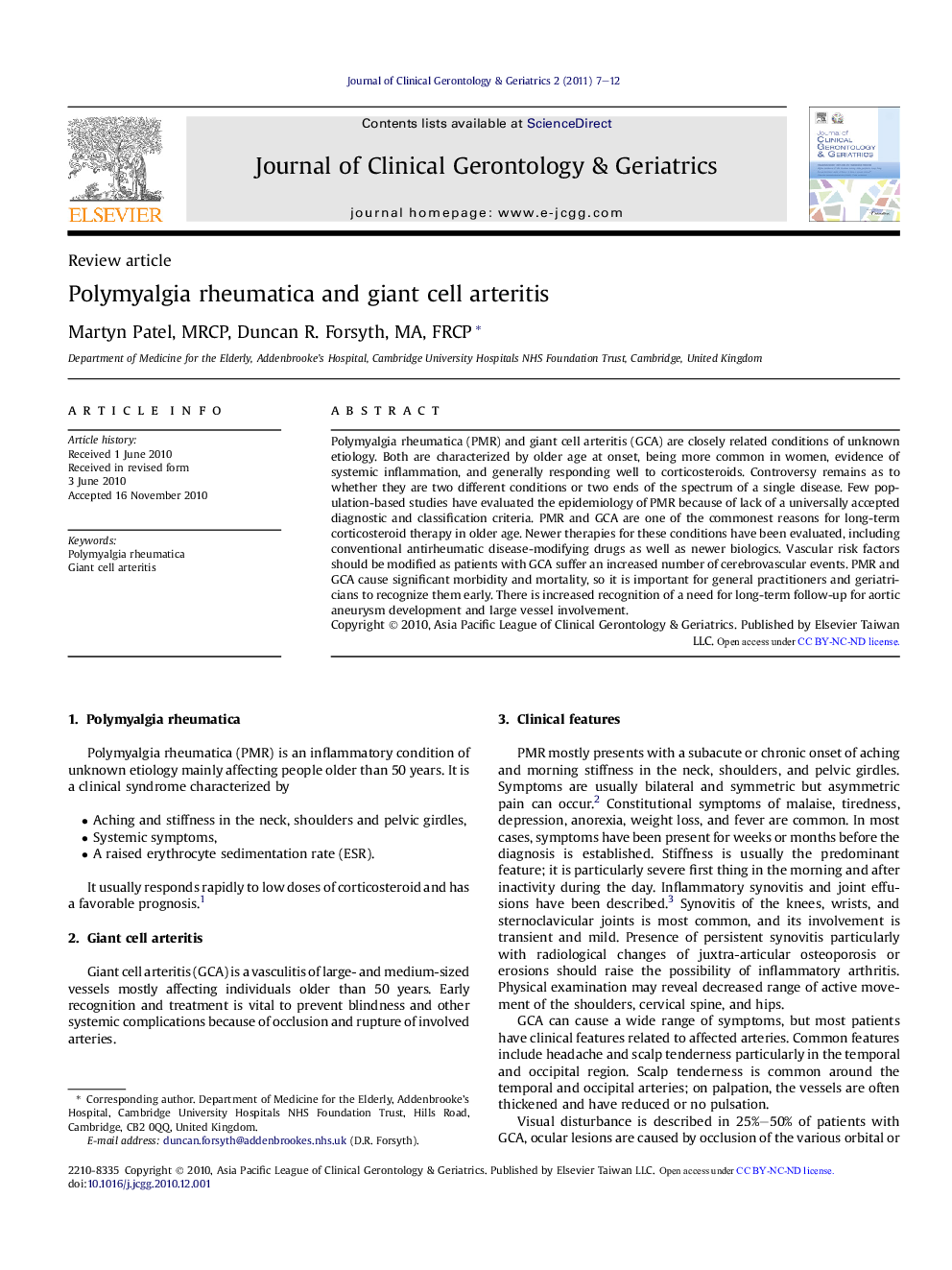| Article ID | Journal | Published Year | Pages | File Type |
|---|---|---|---|---|
| 3325886 | Journal of Clinical Gerontology and Geriatrics | 2011 | 6 Pages |
Polymyalgia rheumatica (PMR) and giant cell arteritis (GCA) are closely related conditions of unknown etiology. Both are characterized by older age at onset, being more common in women, evidence of systemic inflammation, and generally responding well to corticosteroids. Controversy remains as to whether they are two different conditions or two ends of the spectrum of a single disease. Few population-based studies have evaluated the epidemiology of PMR because of lack of a universally accepted diagnostic and classification criteria. PMR and GCA are one of the commonest reasons for long-term corticosteroid therapy in older age. Newer therapies for these conditions have been evaluated, including conventional antirheumatic disease-modifying drugs as well as newer biologics. Vascular risk factors should be modified as patients with GCA suffer an increased number of cerebrovascular events. PMR and GCA cause significant morbidity and mortality, so it is important for general practitioners and geriatricians to recognize them early. There is increased recognition of a need for long-term follow-up for aortic aneurysm development and large vessel involvement.
